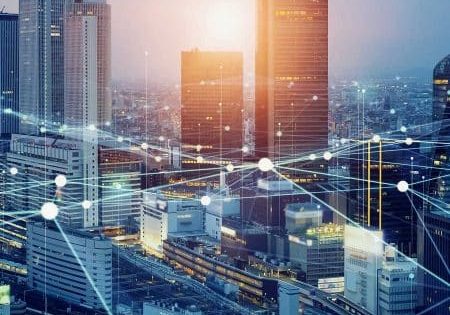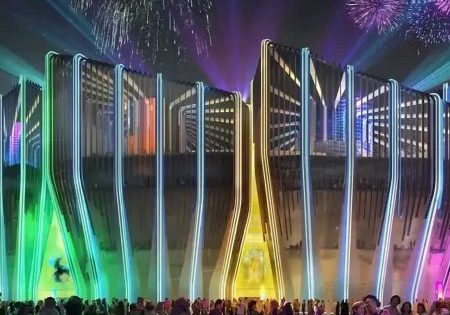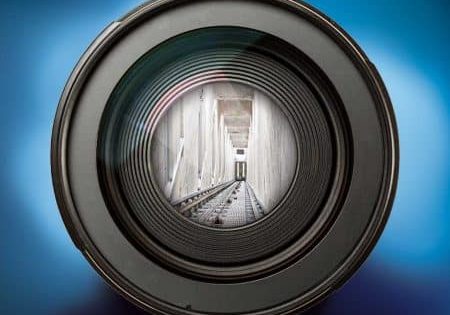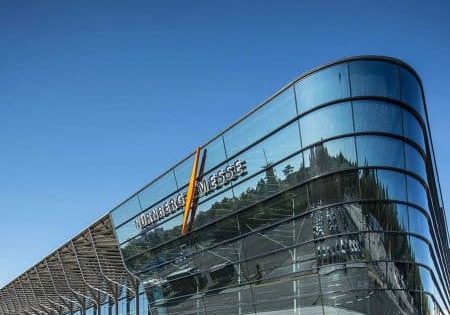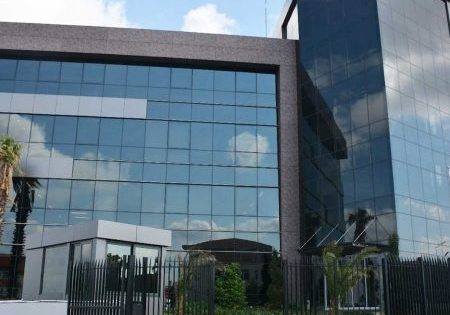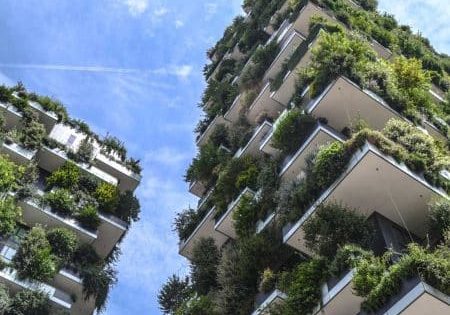Using Digital Tools To Elevate Sustainability
Sep 16, 2024
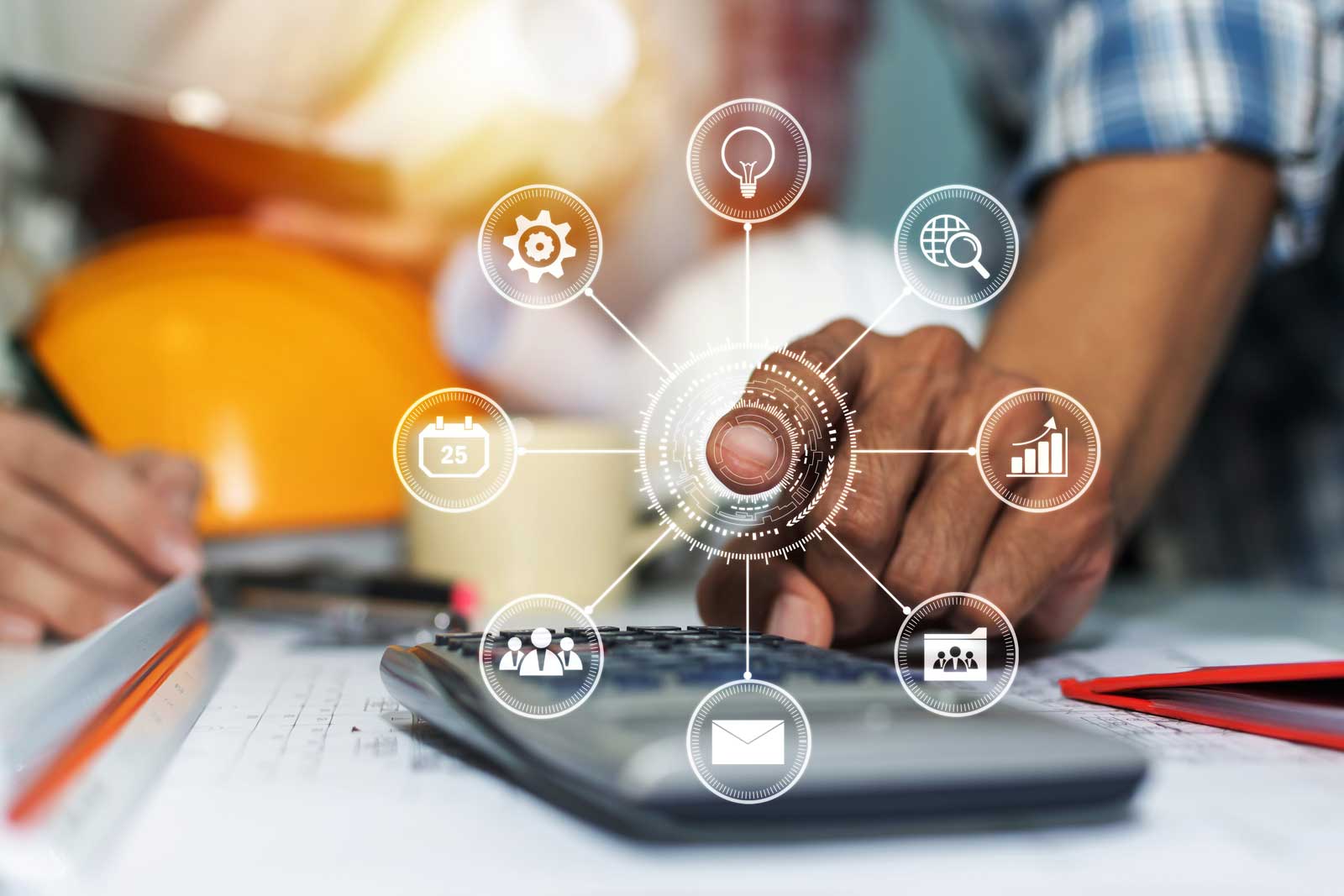
by Robert Kaspersma, Claudio Donghi
This paper was presented at the 2023 International Elevator & Escalator Symposium in Edinburgh, Scotland.
Abstract
In the European Union, the building sector is the largest single energy consumer, responsible for approximately 40% of energy consumption and 36% of CO2 emissions. Around 75% of current building stock in the EU is deemed energy inefficient, meaning that a large proportion of the energy used goes to waste. So, environmental issues are on everybody’s agenda nowadays. The elevator industry can contribute to decarbonizing the built environment by providing energy- efficient solutions and reducing the carbon emitted during the production of materials.
The reduction of energy consumption is one pillar of sustainable elevators. The introduction of the EcoDisc machine has made KONE machine-room-less elevators one of the most energy efficient. Use of LED lighting, standby functions and regenerative drives have reduced energy consumption even further. However, the latest new European environmental regulations require more than just reduction of energy.
The assessment of the complete lifecycle of our products plays a vital role when implementing these new regulations. This is also true for customers when they are looking to transport people within their buildings.
The Smart Readiness Indicator (SRI) for buildings provides information on how smart-ready a building is. The SRI assesses the technologies embedded in all building systems and how these can respond to changes of the system and environmental conditions (including energy grid), as well as demand from the people using the building. The SRI intends to increase the comfort and overall well-being of users by raising awareness of the benefits of smart technologies in buildings.
The digitalization of the building industry develops slower compared to other industries. Two other important tools that take part in the digitalization process are worth mentioning: Building Information Modeling (BIM) and Digital Product Passport (DPP). Both are digital solutions that aid in the process of providing transparency on the sustainability of products and buildings.
BIM is the latest tool used by architects and contractors to design, build and manage buildings. One interesting outcome of using BIM in the design phase is that simulations can be done to calculate the future carbon footprint of buildings. The possibility of doing these calculations beforehand allows building managers to meet environmental goals more efficiently. The calculation of the footprint includes all the materials used, as well as building systems such as elevators, escalators, etc.
The DPP, which is currently being implemented for textiles, construction, industrial and car batteries, provides information about the product itself, materials used and their embodied environmental impact.
Both these tools will play an increasing role in the future of the elevator industry. It will require a lot of effort to provide the information needed to be able to use the tools effectively.
Customers will require us to give them clear insight into our products. As an industry, we need to prepare ourselves for the upcoming requirements because of the new European regulations.
Introduction
Nowadays, environment and sustainability are important topics on everybody’s agenda. We see the consequences of our behavior on the planet and climate.
All kinds of initiatives have been introduced to reduce energy consumption or to change to cleaner alternatives. The energy consumption of KONE products has always been high on our agenda, and we have succeeded in developing one of the most energy-efficient elevators on the market. Other products like UltraRope® reduce the moving masses of an elevator drastically, in turn reducing the energy consumption of high-rise elevators.
Currently, 17 goals are determined by the United Nations for sustainable development (Figure 1). These goals are much wider than thinking about the environment. They contain items such as no poverty, zero hunger, gender equality, good health and well-being and climate action.
KONE has embraced these goals and has set targets for 2030 to achieve a 40% reduction in greenhouse gas emissions related to the materials and lifetime energy use of our products. We have also committed to a 50% cut in the emissions from our own operations and pledged to have carbon-neutral operations. So, how do we get there — not just as KONE, but as an industry? Currently, new regulations are being introduced around the world to make more sustainable products. Energy consumption has become just one of the important factors for a sustainable product.
These new regulations have a much bigger impact on the complete life cycle of our products. It starts with the choice of raw materials such as steel, concrete and others. The production of these raw materials can have different carbon footprints to begin with. Some materials, such as, for example, lead, should be avoided at all costs. This is where the choice of the right supplier can make a difference. The next step is the production of the product itself. By using solar energy to produce electricity in our factories, the need for generating electricity from other resources is reduced.
The next phase in the cycle is the transportation of the parts to the job site. Here, a difference can be made by using alternative transportation means or even choosing to produce locally.
Keeping the product in good working order will ensure as low an energy consumption as the product was designed to achieve. Remote monitoring and predictive maintenance are digital tools that enable us to make decisions on when parts need to be replaced. If bigger parts need to be replaced and we are talking about modernization, then the questions should be, “Can parts be repaired and reused or, when they need to be disposed of, can they safely be discarded or be recycled?”
The same applies when the product is at the end of its life. By making the right choices at the start — during product design — the reusability of parts or materials can contribute to the sustainability of the product.
All these previous steps have taken KONE in the right direction to minimize our impact on the environment, but more steps need to be taken to make sure that we will reach the set goals and comply with new European environmental regulation requirements. In this paper, we will focus on three of these new requirements and tools.
The SRI for buildings gives information on how smart the building is and how its systems can respond to changes in the system and environment (including energy grid) conditions and demands from the people using the building. The SRI intends to increase the comfort and overall well-being of users by raising awareness of the benefits of smart technologies in buildings.
The digitalization of the building industry develops slower compared to other industries. Two other important tools that take part in the digitalization process are worth mentioning: BIM and the DPP. Both are digital solutions that aid in the process of providing transparency on the sustainability of products and buildings.
1. SRI
What is the SRI for buildings? Why is the SRI useful? Where does the SRI concept come from? Is SRI implementation mandatory? How will the European Commission support SRI implementation? This paragraph provides answers to these questions, providing an overview of SRI methodology and outlining the opportunities and challenges for elevator and escalator industry.
The SRI is a new, optional policy instrument developed by the European Commission under the revised Energy Performance of Buildings Directive (EPBD) in 2018.
The indicator is intended to raise awareness among building owners and occupants about the benefits of smart technologies and Information and CommunicationTechnology (ICT) in buildings, especially from an energy perspective, and about the value behind building automation and electronic monitoring of technical building systems. It aims to motivate consumers to accelerate investments in smart building technologies, supporting the uptake of technology innovation in the building sector, giving confidence to occupants about the actual savings of those new, enhanced functionalities.
In a nutshell, the core of SRI methodology is based on three key functionalities, seven impact criteria and nine technical domains, as shown in Figure 2. This indicator will allow for rating the smart readiness of buildings, i.e., the capability of buildings to adapt their operation to the needs of the occupant, optimize energy efficiency and overall performance, and adapt their operations in reaction to signals from the grid (energy flexibility).
The methodology for calculating the SRI rating of a building is based on the building’s readiness to accommodate “smart-ready services.” A “smart-ready service catalogue” refers to building services that are categorized into nine technical domains. Such smart-ready services are enabled by a combination of smart-ready technologies defined in a technology-neutral way. For a given building, all smart-ready services are assessed against the seven desired impacts of smart buildings.
Under the proposed SRI methodology, the smart readiness score of a building is a percentage that expresses how close (or far) the building is from maximum smart readiness. The higher the percentage, the smarter the building. Whenever an SRI certificate is to be issued, assessment of the SRI will be done by qualified third-party assessors who conduct an on-site inspection. Self- assessment may be an option, but cannot result in the issuance of an SRI certificate.
The Commission is providing support and guidance to EU countries and regions that implement or undertake a test phase of the SRI. The SRI platform, launched in December 2021, contributes to the promotion of the SRI and related best practices. It acts as an exchange forum involving all stakeholders interested in the SRI and a forward-looking discussion hub for technical, regulatory and implementation aspects of the SRI.
Regarding the scope of the SRI, all equipment under the scope of the Energy Performance of Buildings Directive (EPBD) is included in the SRI, as well as electric vehicle charging as a domain. Elevators and escalators are not yet included in SRI methodology, even if these systems contribute to energy efficiency of buildings and improve the convenience, comfort, health and well-being of occupants, enabling accessibility and mobility services and delivering Information to users.
It has been discussed in our corporation and in the European Lift Association (ELA) whether the SRI policy is of interest to the elevator industry. It was considered an opportunity to be explored in depth, thus active participation in the ongoing study was deemed necessary. ELA has formed the SRI Working Group (WG) to develop ELA’s position on SRI. KONE experts in the field joined this WG, as well.
The goal of the SRI WG is to help the ELA board decide on the right directions on SRI by assessing the possibility of including elevators and escalators in the metrics and preparing a proposal of a suitable smart-ready service catalogue in view of the next review of SRI.
The opportunity for our industry is that, through the inclusion of elevators and escalators into the SRI framework, technological innovation in our sector becomes supported, and thus creates an incentive for the integration of cutting-edge smart elevator and escalator technologies in buildings to the benefit of building occupants and the environment. One innovative way that KONE elevators reduce emissions is through the addition of regenerative drives that recapture energy when the lift is in motion and help save energy. Systems are also getting smarter. Predictive maintenance can fix any potential problems before they cause a breakdown. Advanced algorithms can group passengers going to the same floor, reducing the number of stops and minimizing operation time.
The main challenges involve how to put people at the center of buildings — understanding and optimizing people flow and accessibility — and how to integrate elevators and escalators with other domains in the overall scoring, considering the expectations of other buildings services.
To recap, the SRI might be an essential enabler to decarbonize the building sector while offering healthier, more efficient, safer and more comfortable living environments.
2. BIM
BIM is a methodology that combines the 3D representation (graphical) of a building and information regarding its design, materials, construction and operations. The model serves as one file that gathers data from all building systems, engineers, architects, building owners and building managers. The model stores big amounts of data and can be used to perform calculations on the building’s energy consumption to support efficient building operation.
Although the uptake of BIM technologies seems relatively new, the first concept of BIM was developed in the early 1970s. The computers used at that time were not as powerful as nowadays, so the possibilities were limited. The term BIM was developed in the 1980s when Computer Aided Design (CAD) became the standard for design. As CAD evolved from only 2D drawings to files that contained more properties and information than just the drawing, it became easier to build models. BIM became popular after Autodesk (maker AutoCad) released a white paper about BIM in 2002.
BIM is not only used in buildings, but can be applied in all kinds of other construction including railways, bridges, etc. BIM allows multiple disciplines — such as elevator manufacturers, plumbers, air handling suppliers, etc. — to add information to the general model of the building. In this way, clashes between the disciplines can be checked beforehand, and if needed, resolved before construction.
What does BIM have to do with sustainability, you may ask? The answer is that the construction industry is responsible for approximately 40% of the total energy use
and for 36% of energy- related CO2 emissions. With this in mind, BIM offers many advantages in the way we plan, build and operate our new buildings. The information on all used parts and components in the model can include not only material specification, but also carbon emission information and reusability information, as well. BIM information allows us to make energy-efficiency calculations by modeling, for example, airflow, orientation of the building outdoor climate, and the use of energy-efficient products like LED lighting, heat pumps, solar energy, triple-insulated glazing, etc., as mentioned in the introduction of the United Nations’ Sustainable Development Goals for 2030. Many governments, for example the United Kingdom, have made BIM compulsory for new developments.
BIM allows designers to make changes to, for example, materials and products based on their CO2 footprint impact and potential consequences for the overall project.
In the previous chapter, SRI was discussed. Then why use BIM if SRI is already a sufficient tool? The difference is that BIM is an efficient tool that allows us to make predictions about the energy consumption of buildings beforehand, as well as offer a model to be used for a more efficient assessment of the smart readiness of buildings.
Standardization
In order to allow BIM to make the process of gathering and exchanging data more efficient, standardization of how information is shared is essential. In Europe, CEN TC 442 is involved for BIM.
The international bible for information management of BIM is the ISO 19650 series. The ISO 19650-1 and ISO 19650-2 standards were published in 2018 and are based on the British standard BS 1192, which has been used for many years. The original BS 1192 sets a method for managing the production, distribution and quality of construction information.
In total, there are six parts.
ISO 19650-1:2018 / Part 1: Concepts and Principles
ISO 19650-2:2018 / Part 2: Delivery Phase of the Assets (Project Phase)
ISO 19650-3:2020 / Part 3: Operational Phase of the Assets ISO 19650-4:2022 / Part 4: Information Exchange
ISO 19650-5:2020 / Part 5: Security-Minded Approach to Information Management ISO/AWI 19650-6 / UNDER DEVELOPMENT: Part 6: Health and Safety
These standards define what needs to be arranged, not specifically how it needs to be arranged. This means that national methods can still be adopted.
One other widely recognized BIM standard is the ISO 16739, Industry Foundation Classes (IFC). It covers processes, data, terms, dictionaries and specifications. All are vital when considering data sharing between software applications in the construction and facility management industries.
Another set of ISO standards for BIM is the ISO 29481 series. Currently, there are two parts.
Part 1 sets out a methodology for the provision of an integrated reference document that describes the processes and data required in the development or management of a constructed facility. It describes how to identify and describe the processes undertaken within that context, the information required for their execution and the results.
Part 2 sets out a methodology and format for describing coordination acts between actors in a construction project. It describes how to identify and define the coordination processes undertaken and the information required for their execution. The resulting interaction frameworks enable standardization of interaction in building processes on national, local, and project level.
Currently, many national developments are taking place. Below is an overview:
For elevators, a technical specification is being developed. This is the ISO/AWI TS 8100-10 Lifts for the Transport of Persons and Goods — Part 10: Building Information Modelling. The goal is to create a BIM data model for elevators and to describe the impact of the ISO 19650-1:2018 and current building industry market trends to the building information model (BIM) related to elevators. It will contain a description of a BIM model for elevators and how much detail is needed to satisfy the lifecycle requirements.
A further development ongoing in BIM is adding more dimensions to the model. It started with a 3D model, and the following dimensions are being added:
4D BIM covers the planning of the project. It allows the optimization of construction scheduling and process planning.
5D BIM covers the money side of the project. It allows optimizing the costs and making budgetary analyses.
6D BIM is the layer that covers the sustainability aspect. It helps make decisions regarding the economic and operational aspects of the entire lifecycle of the building.
7D BIM covers the facility management information layer. This includes information on the technical specifications, warranty information, operating manuals, etc.
8D BIM considers site safety and risk analysis. By visualizing the construction, risks can be identified and mitigated.
9D BIM, another layer closely related to sustainability, covers Lean construction and waste management.
10D BIM, the last layer, strives for industrialized construction and enhances the productivity of the construction process through asset management.
Another development that is emerging in the construction industry is called Digital Twin (DT), which, in essence, is a digital representation of a physical object. So, what is the difference, since BIM is considered a digital representation of the building, too?
BIM is best used for the construction and design of the building, and DT is best used for building maintenance and operations. Although, where BIM is concerned, it can cover these aspects as well.
3. The Digital Product Passport (DPP)
The third digital tool enabling elevation of sustainability is the Digital Product Passport (DPP), strictly connected with the proposal of the new EcoDesign for Sustainable Products Regulation (ESPR). Many studies conducted by European policymakers clearly indicated that some of the barriers hindering more circularity of our economy and higher environmental sustainability of products placed on the market are connected to lack of consistent access to relevant information, where the relevancy is a function of different stakeholders’ interest.
The DPP is a tool designed to address this gap, exploiting the great potential that digital solutions provide to collect, organize and store information in efficient and secure ways. The final objective is for the DPP to become the “one entry point” to have access to all existing information related to a product during its entire life cycle.
As shown in Figure 5, DPP aims to include product-specific information relevant to promoting circularity, sustainability and related legal compliance. It strives to provide relevant information regarding the sustainability metrics of a product, supporting better decision making on every level. The DPP can help extend the lifespan by sharing data for re-use and enabling access to repair. It is also an opportunity for developing new circular markets and business services to achieve a functioning EU market for secondary raw materials to enable recycled content to replace virgin content. Finally, the DPP will extend the knowledge of Design for Circularity in the product-development field across the EU, enhance and build new ecosystems around the data and improve information exchange.
The DPP will require the end product manufacturers to gather and distribute data when these specific products have an approved Category of Products framework under ESPR. Access to information is enabled through a data carrier and the corresponding unique identifier.
The DPP system, to be developed before the DPP deployment, refers to all standards and protocols related to the IT architecture: unique identifiers; data carriers; links between physical product and digital representation, including lookup mechanism; access rights management; interoperability (technical, semantic, organization), including data exchange protocols and formats and data processing (introduction, modification, update); data authentication, reliability and integrity; data security and privacy.
To be implemented and adopted successfully, the DPP must meet the following five design requirements: (1) future-proof IT architecture based on European or international standards;
(2) affordable, so as to be a cost-effective tool, avoiding the burden of gathering data falling disproportionally on SMEs; (3) reliable, so as to be created on demand in as large a quantity as needed; (4) accommodable, so as to be able to be fit for as many sectors as possible; (5) scalable, so it can be designed for use by every European consumer.
According to key leading industry associations, to be effective, the DPP must respect the following five principles: (1) be strictly relevant to circular economy purposes; (2) be product specific; (3) be focused on the needs of its recipients; (4) protect confidential information and (5) ensure good data quality, consistency, comparability and interoperability.
The DPP is currently being implemented in B2C (business to consumer) only, but in the future might also be adopted in B2B (business-to-business) products. By early 2027, the first DPPs, related to batteries for e-vehicles, shall be operational. Around the same time, the first Delegated Acts on ESPR regulated products should also become implementable. What does the DPP imply from the elevator and escalator OEM if these product categories will be covered by ESPR? These three critical issues need to be solved.
The first barrier is the release of confidential data. The DPP will require OEMs to upload to an open- source platform with very detailed information on their products — meaning compositions, origin, materials used, etc. The risk of compromising confidentiality is high. Adequate guarantees or safeguards ensuring the protection of knowledge-based assets, which require significant investments, may force economic operators to disclose trade secrets. Disclosing confidential information would mean contradicting EU legislation and putting European companies in a disadvantaged position compared to their non-EU competitors.
A second barrier is providing environmental data at the component level. The main issue is the lack of information from some suppliers. There are materials or certain components for which the OEM does not know or cannot trace its environmental footprint and environmental data (e.g., the life expectancy of each component). Many companies have long value chains and the further in the chain they are, the more difficult their data gathering is, especially from non-EU countries.
Lastly is the challenge of creating large amounts of passports since suppliers and data vary from product to product. OEMs face the same issue of lack of information for some materials, and they vary from supplier to supplier, which will mean different information for each elevator built.
To recap, setting up a DPP that is strictly relevant to circular economy purposes protects confidential business information and relies on high-quality, consistent, comparable and interoperable data. A DPP can be an enabler to elevate sustainability if the three above concerns are solved.
Conclusion
The United Nations has set Sustainable Development Goals for 2030. Because the construction industry is one of the main sources of CO2 emissions in cities around the world, a lot can be gained from reducing these. Digitalization is essential to be able to achieve a sustainable future. For new construction, BIM allows the design and construction team to make sustainable choices based on the information provided and be able to make predictions on the full lifecycle CO2 footprint of the building. It also provides insight on the exploitation of the building. Of course, this requires detailed information to be provided in the correct format. DPP is another development that relies on information. The DPP will provide key product-related information about sustainability and circularity to basically anybody.
The SRI as a regulation from the European Commission accelerated the awareness and uptake of smart technologies in buildings, supporting the implementation of BIM and the DPP. The SRI assesses how smart the building is and how its systems can respond to changes in the system and environment (including the energy grid), conditions and demands from the people living and or working inside the building.
If we look to the future, more digitalization is being implemented in new and recent published regulations. This requires our industry to not only focus on our product safety regulations, but widen our view for new regulations to allow for a sustainable future.
Some examples of other new/recent regulations are:
The New Machinery Regulation:
- Allow the digitalization of documentation to be provided with the product
- Cover the use of Artificial Intelligence
More digitalization requires strong regulation on the security of the information:
- European Cybersecurity Act
- European Data Act
These new ways require skillful workers (green workers) in the construction industry who welcome the use of digital technologies as part of their daily work.
To elevate sustainability, digitalization is now!
References
[1] The 17 Sustainable Development Goals of the United Nations: sdgs.un.org/goals
[2] Smart Readiness Indicator Europe: energy.ec.europa.eu/topics/energy-efficiency/energy-efficient-buildings/smart-readiness-indicator_en
[3] Autodesk White Paper on BIM: laiserin.com/features/bim/autodesk_bim.pdf
[4] ELA paper on BIM : ela-aisbl.eu/images/BIM_Information_Note.pdf
[5] Webinar on the Digital Product Passport; ec.europa.eu/docsroom/documents/54874?locale=en
Get more of Elevator World. Sign up for our free e-newsletter.


